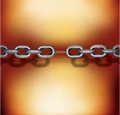| Surveying | |
Surveying and GIS: Finding the missing link
|
||||||||
The Value of Land SurveyorsTen years ago the California Board for Professional Engineers and Land Surveyors (BPELS) attempted to pass a set of rules that required all digital mapping to be performed by Professional Land Surveyors. The motivation for these rules stemmed from the definition of surveying under the California Professional Land Surveyors’ Act, which includes specific reference to digital mapping being within the purview of the Professional Land Surveyor. The BPELS at the time concluded that there were sufficient risks in the making of digital maps, which if made incorrectly, could cause damage to the health and welfare of the public. The BPELS is made up of 13 members. Seven of these are public members (having no professional background in Engineering or Surveying), five are licensed Professional Engineers, and one is a licensed Professional Land Surveyor. The following history of the BPELS appears on their web site: A Brief History of the BoardThe California Legislature created the Board of Registration for Civil Engineers in 1929, following the failure of the St. Francis Dam in northern Los Angeles County. On March 12, 1928, the dam, which was located northeast of Castaic, suddenly gave way. A huge wall of water cascaded down the narrow valley of the Santa Clara River and when the water hit the town of Santa Paula, almost 50 miles downstream, the crest was still 25 feet high. The dam failure unleashed 12 billion gallons of water through the towns of Piru, Fillmore, Santa Paula, and Ventura before it reached the ocean. Lives lost numbered approximately 450; property damage was in the millions of dollars; 1,200 houses were demolished; and 10 bridges washed out. After the flood, inspection revealed that the dam was built on, and anchored to, a weak and faulted rock formation. The Legislature determined that the unregulated design of construction projects constituted a hazard to the public and passed laws to regulate civil engineering and to create the Board. Although Civil Engineers first became licensed in 1929, Land Surveyors have been licensed in California since 1891. That was the year the Legislature established the State Surveyor General. However, in 1933, the Legislature abolished that office and enacted the Professional Land Surveyors’ Act. The Act expanded the Board’s authority to include jurisdiction over licensing of land surveyors and regulation of surveying practices. …Regulation of land surveyors brought about uniform enforcement of survey law and is in the best interests of the state and California consumers. (from http://www. pels.ca.gov/about_us/history.shtml) The history of BPELS highlights the need for society to regulate professional practice and to maintain a minimum set of standards in order to protect the information from recorded documents, statutes, case law, and measured evidence found in the field to arrive at the true location of legal title boundaries to real estate. In this text Mr. Gold cites approximately 550 precedent setting court cases specific to Texas that have added to the body of knowledge of how professional land surveyors should treat conflicting evidence describing the location of boundaries to real estate. A similar body of court cases is slowly mounting covering mapping and GIS products. Location on or near the Surface of the EarthOf course, the surveyor is also adept and skilled in the science of measurements to determine relative location (say property corners within a subdivision) and absolute location (say relative to the national mapping grid). Throughout the history of land surveying, the science of locating position on the surface of the Earth and the measurement of the size and shape of the Earth (Geodesy) is well documented and resides within the domain of the Surveyor and a specialist surveyor, known as the Geodesist. One of the first texts on surveying in English, Geodaesia by John Love, was published in 1688 in London. The text describes the reduction of field measurements of angles and distances by compass and chain, then using logarithmic and trigonometric tables to compute boundary locations. The ancient analogue measuring instruments used in 1688 have been replaced by digital measuring systems, including GPS, digital theodolites (total stations) with built-in electronic distance measurement, and digital levels using bar code reading systems. All these measurements are data logged and imported into surveying software and digital drafting software. The end products of these digital surveys are easily imported into GIS software. Much of the surveyor’s time in both the field and in front of the computer is spent on making redundant checks. These built in checks are essential for the computation of accuracy and precision using statistical evaluation software. When results lie outside given tolerances, field measurements are repeated until the required standards are met. Most surveyors have exposure to GIS with some actively using GIS to manage their own geospatial data. GIS software vendors are also making life easier for surveyors to use GIS by incorporating surveying functionality within GIS (a good examples is ESRI’s ArcSurvey). Recent surveying graduates are well versed in GIS with many university programs incorporating courses in GIS as part of the surveying degree curriculum (for example see http://csci.tamucc. edu/gisc/). Why is it then that most GIS enterprises do not involve surveyors? |
||||||||















 (105 votes, average: 4.44 out of 5)
(105 votes, average: 4.44 out of 5)




A very thought provoking and balance view of the surveying profession by the authors. I also agree with Gary’s further comments on this “tension”. Well said.
Leave your response!